-
EXECUTIVE SUMMARY
-
Market Overview
-
Key Findings
-
Market Segmentation
-
Competitive Landscape
-
Challenges and Opportunities
-
Future Outlook
-
MARKET INTRODUCTION
-
Definition
-
Scope of the study
- Research Objective
- Assumption
- Limitations
-
RESEARCH METHODOLOGY
-
Overview
-
Data Mining
-
Secondary Research
-
Primary Research
- Primary Interviews and Information Gathering Process
- Breakdown of Primary Respondents
-
Forecasting Model
-
Market Size Estimation
- Bottom-Up Approach
- Top-Down Approach
-
Data Triangulation
-
Validation
-
MARKET DYNAMICS
-
Overview
-
Drivers
-
Restraints
-
Opportunities
-
MARKET FACTOR ANALYSIS
-
Value chain Analysis
-
Porter's Five Forces Analysis
- Bargaining Power of Suppliers
- Bargaining Power of Buyers
- Threat of New Entrants
- Threat of Substitutes
- Intensity of Rivalry
-
COVID-19 Impact Analysis
- Market Impact Analysis
- Regional Impact
- Opportunity and Threat Analysis
-
Baby Food Packaging Market, BY Material Type (USD Billion)
-
Glass
-
Plastic
-
Metal
-
Paper
-
Baby Food Packaging Market, BY Product Type (USD Billion)
-
Puree
-
Snacks
-
Cereal
-
Formula
-
Baby Food Packaging Market, BY Packaging Type (USD Billion)
-
Bottles
-
Pouches
-
Jars
-
Boxes
-
Baby Food Packaging Market, BY Distribution Channel (USD Billion)
-
Online
-
Supermarkets
-
Convenience Stores
-
Pharmacies
-
Baby Food Packaging Market, BY Regional (USD Billion)
-
North America
- US
- Canada
-
Europe
- Germany
- UK
- France
- Russia
- Italy
- Spain
- Rest of Europe
-
APAC
- China
- India
- Japan
- South Korea
- Malaysia
- Thailand
- Indonesia
- Rest of APAC
-
South America
- Brazil
- Mexico
- Argentina
- Rest of South America
-
MEA
- GCC Countries
- South Africa
- Rest of MEA
-
Competitive Landscape
-
Overview
-
Competitive Analysis
-
Market share Analysis
-
Major Growth Strategy in the Baby Food Packaging Market
-
Competitive Benchmarking
-
Leading Players in Terms of Number of Developments in the Baby Food Packaging Market
-
Key developments and growth strategies
- New Product Launch/Service Deployment
- Merger & Acquisitions
- Joint Ventures
-
Major Players Financial Matrix
- Sales and Operating Income
- Major Players R&D Expenditure. 2023
-
Company Profiles
-
P Ampharo
- Financial Overview
- Products Offered
- Key Developments
- SWOT Analysis
- Key Strategies
-
Sprout Foods
- Financial Overview
- Products Offered
- Key Developments
- SWOT Analysis
- Key Strategies
-
Abbott Laboratories
- Financial Overview
- Products Offered
- Key Developments
- SWOT Analysis
- Key Strategies
-
Gerber Products Company
- Financial Overview
- Products Offered
- Key Developments
- SWOT Analysis
- Key Strategies
-
Danone
- Financial Overview
- Products Offered
- Key Developments
- SWOT Analysis
- Key Strategies
-
Kraft Heinz Company
- Financial Overview
- Products Offered
- Key Developments
- SWOT Analysis
- Key Strategies
-
BeechNut Nutrition
- Financial Overview
- Products Offered
- Key Developments
- SWOT Analysis
- Key Strategies
-
Earth's Best
- Financial Overview
- Products Offered
- Key Developments
- SWOT Analysis
- Key Strategies
-
Happy Family Organics
- Financial Overview
- Products Offered
- Key Developments
- SWOT Analysis
- Key Strategies
-
Mead Johnson Nutrition
- Financial Overview
- Products Offered
- Key Developments
- SWOT Analysis
- Key Strategies
-
Nestle
- Financial Overview
- Products Offered
- Key Developments
- SWOT Analysis
- Key Strategies
-
Pura Vida
- Financial Overview
- Products Offered
- Key Developments
- SWOT Analysis
- Key Strategies
-
Blue Diamond Growers
- Financial Overview
- Products Offered
- Key Developments
- SWOT Analysis
- Key Strategies
-
Hain Celestial
- Financial Overview
- Products Offered
- Key Developments
- SWOT Analysis
- Key Strategies
-
Heinz
- Financial Overview
- Products Offered
- Key Developments
- SWOT Analysis
- Key Strategies
-
Appendix
-
References
-
Related Reports
-
LIST Of tables
-
LIST OF ASSUMPTIONS
-
North America Baby Food Packaging Market SIZE ESTIMATES & FORECAST, BY MATERIAL TYPE, 2019-2035 (USD Billions)
-
North America Baby Food Packaging Market SIZE ESTIMATES & FORECAST, BY PRODUCT TYPE, 2019-2035 (USD Billions)
-
North America Baby Food Packaging Market SIZE ESTIMATES & FORECAST, BY PACKAGING TYPE, 2019-2035 (USD Billions)
-
North America Baby Food Packaging Market SIZE ESTIMATES & FORECAST, BY DISTRIBUTION CHANNEL, 2019-2035 (USD Billions)
-
North America Baby Food Packaging Market SIZE ESTIMATES & FORECAST, BY REGIONAL, 2019-2035 (USD Billions)
-
US Baby Food Packaging Market SIZE ESTIMATES & FORECAST, BY MATERIAL TYPE, 2019-2035 (USD Billions)
-
US Baby Food Packaging Market SIZE ESTIMATES & FORECAST, BY PRODUCT TYPE, 2019-2035 (USD Billions)
-
US Baby Food Packaging Market SIZE ESTIMATES & FORECAST, BY PACKAGING TYPE, 2019-2035 (USD Billions)
-
US Baby Food Packaging Market SIZE ESTIMATES & FORECAST, BY DISTRIBUTION CHANNEL, 2019-2035 (USD Billions)
-
US Baby Food Packaging Market SIZE ESTIMATES & FORECAST, BY REGIONAL, 2019-2035 (USD Billions)
-
Canada Baby Food Packaging Market SIZE ESTIMATES & FORECAST, BY MATERIAL TYPE, 2019-2035 (USD Billions)
-
Canada Baby Food Packaging Market SIZE ESTIMATES & FORECAST, BY PRODUCT TYPE, 2019-2035 (USD Billions)
-
Canada Baby Food Packaging Market SIZE ESTIMATES & FORECAST, BY PACKAGING TYPE, 2019-2035 (USD Billions)
-
Canada Baby Food Packaging Market SIZE ESTIMATES & FORECAST, BY DISTRIBUTION CHANNEL, 2019-2035 (USD Billions)
-
Canada Baby Food Packaging Market SIZE ESTIMATES & FORECAST, BY REGIONAL, 2019-2035 (USD Billions)
-
Europe Baby Food Packaging Market SIZE ESTIMATES & FORECAST, BY MATERIAL TYPE, 2019-2035 (USD Billions)
-
Europe Baby Food Packaging Market SIZE ESTIMATES & FORECAST, BY PRODUCT TYPE, 2019-2035 (USD Billions)
-
Europe Baby Food Packaging Market SIZE ESTIMATES & FORECAST, BY PACKAGING TYPE, 2019-2035 (USD Billions)
-
Europe Baby Food Packaging Market SIZE ESTIMATES & FORECAST, BY DISTRIBUTION CHANNEL, 2019-2035 (USD Billions)
-
Europe Baby Food Packaging Market SIZE ESTIMATES & FORECAST, BY REGIONAL, 2019-2035 (USD Billions)
-
Germany Baby Food Packaging Market SIZE ESTIMATES & FORECAST, BY MATERIAL TYPE, 2019-2035 (USD Billions)
-
Germany Baby Food Packaging Market SIZE ESTIMATES & FORECAST, BY PRODUCT TYPE, 2019-2035 (USD Billions)
-
Germany Baby Food Packaging Market SIZE ESTIMATES & FORECAST, BY PACKAGING TYPE, 2019-2035 (USD Billions)
-
Germany Baby Food Packaging Market SIZE ESTIMATES & FORECAST, BY DISTRIBUTION CHANNEL, 2019-2035 (USD Billions)
-
Germany Baby Food Packaging Market SIZE ESTIMATES & FORECAST, BY REGIONAL, 2019-2035 (USD Billions)
-
UK Baby Food Packaging Market SIZE ESTIMATES & FORECAST, BY MATERIAL TYPE, 2019-2035 (USD Billions)
-
UK Baby Food Packaging Market SIZE ESTIMATES & FORECAST, BY PRODUCT TYPE, 2019-2035 (USD Billions)
-
UK Baby Food Packaging Market SIZE ESTIMATES & FORECAST, BY PACKAGING TYPE, 2019-2035 (USD Billions)
-
UK Baby Food Packaging Market SIZE ESTIMATES & FORECAST, BY DISTRIBUTION CHANNEL, 2019-2035 (USD Billions)
-
UK Baby Food Packaging Market SIZE ESTIMATES & FORECAST, BY REGIONAL, 2019-2035 (USD Billions)
-
France Baby Food Packaging Market SIZE ESTIMATES & FORECAST, BY MATERIAL TYPE, 2019-2035 (USD Billions)
-
France Baby Food Packaging Market SIZE ESTIMATES & FORECAST, BY PRODUCT TYPE, 2019-2035 (USD Billions)
-
France Baby Food Packaging Market SIZE ESTIMATES & FORECAST, BY PACKAGING TYPE, 2019-2035 (USD Billions)
-
France Baby Food Packaging Market SIZE ESTIMATES & FORECAST, BY DISTRIBUTION CHANNEL, 2019-2035 (USD Billions)
-
France Baby Food Packaging Market SIZE ESTIMATES & FORECAST, BY REGIONAL, 2019-2035 (USD Billions)
-
Russia Baby Food Packaging Market SIZE ESTIMATES & FORECAST, BY MATERIAL TYPE, 2019-2035 (USD Billions)
-
Russia Baby Food Packaging Market SIZE ESTIMATES & FORECAST, BY PRODUCT TYPE, 2019-2035 (USD Billions)
-
Russia Baby Food Packaging Market SIZE ESTIMATES & FORECAST, BY PACKAGING TYPE, 2019-2035 (USD Billions)
-
Russia Baby Food Packaging Market SIZE ESTIMATES & FORECAST, BY DISTRIBUTION CHANNEL, 2019-2035 (USD Billions)
-
Russia Baby Food Packaging Market SIZE ESTIMATES & FORECAST, BY REGIONAL, 2019-2035 (USD Billions)
-
Italy Baby Food Packaging Market SIZE ESTIMATES & FORECAST, BY MATERIAL TYPE, 2019-2035 (USD Billions)
-
Italy Baby Food Packaging Market SIZE ESTIMATES & FORECAST, BY PRODUCT TYPE, 2019-2035 (USD Billions)
-
Italy Baby Food Packaging Market SIZE ESTIMATES & FORECAST, BY PACKAGING TYPE, 2019-2035 (USD Billions)
-
Italy Baby Food Packaging Market SIZE ESTIMATES & FORECAST, BY DISTRIBUTION CHANNEL, 2019-2035 (USD Billions)
-
Italy Baby Food Packaging Market SIZE ESTIMATES & FORECAST, BY REGIONAL, 2019-2035 (USD Billions)
-
Spain Baby Food Packaging Market SIZE ESTIMATES & FORECAST, BY MATERIAL TYPE, 2019-2035 (USD Billions)
-
Spain Baby Food Packaging Market SIZE ESTIMATES & FORECAST, BY PRODUCT TYPE, 2019-2035 (USD Billions)
-
Spain Baby Food Packaging Market SIZE ESTIMATES & FORECAST, BY PACKAGING TYPE, 2019-2035 (USD Billions)
-
Spain Baby Food Packaging Market SIZE ESTIMATES & FORECAST, BY DISTRIBUTION CHANNEL, 2019-2035 (USD Billions)
-
Spain Baby Food Packaging Market SIZE ESTIMATES & FORECAST, BY REGIONAL, 2019-2035 (USD Billions)
-
Rest of Europe Baby Food Packaging Market SIZE ESTIMATES & FORECAST, BY MATERIAL TYPE, 2019-2035 (USD Billions)
-
Rest of Europe Baby Food Packaging Market SIZE ESTIMATES & FORECAST, BY PRODUCT TYPE, 2019-2035 (USD Billions)
-
Rest of Europe Baby Food Packaging Market SIZE ESTIMATES & FORECAST, BY PACKAGING TYPE, 2019-2035 (USD Billions)
-
Rest of Europe Baby Food Packaging Market SIZE ESTIMATES & FORECAST, BY DISTRIBUTION CHANNEL, 2019-2035 (USD Billions)
-
Rest of Europe Baby Food Packaging Market SIZE ESTIMATES & FORECAST, BY REGIONAL, 2019-2035 (USD Billions)
-
APAC Baby Food Packaging Market SIZE ESTIMATES & FORECAST, BY MATERIAL TYPE, 2019-2035 (USD Billions)
-
APAC Baby Food Packaging Market SIZE ESTIMATES & FORECAST, BY PRODUCT TYPE, 2019-2035 (USD Billions)
-
APAC Baby Food Packaging Market SIZE ESTIMATES & FORECAST, BY PACKAGING TYPE, 2019-2035 (USD Billions)
-
APAC Baby Food Packaging Market SIZE ESTIMATES & FORECAST, BY DISTRIBUTION CHANNEL, 2019-2035 (USD Billions)
-
APAC Baby Food Packaging Market SIZE ESTIMATES & FORECAST, BY REGIONAL, 2019-2035 (USD Billions)
-
China Baby Food Packaging Market SIZE ESTIMATES & FORECAST, BY MATERIAL TYPE, 2019-2035 (USD Billions)
-
China Baby Food Packaging Market SIZE ESTIMATES & FORECAST, BY PRODUCT TYPE, 2019-2035 (USD Billions)
-
China Baby Food Packaging Market SIZE ESTIMATES & FORECAST, BY PACKAGING TYPE, 2019-2035 (USD Billions)
-
China Baby Food Packaging Market SIZE ESTIMATES & FORECAST, BY DISTRIBUTION CHANNEL, 2019-2035 (USD Billions)
-
China Baby Food Packaging Market SIZE ESTIMATES & FORECAST, BY REGIONAL, 2019-2035 (USD Billions)
-
India Baby Food Packaging Market SIZE ESTIMATES & FORECAST, BY MATERIAL TYPE, 2019-2035 (USD Billions)
-
India Baby Food Packaging Market SIZE ESTIMATES & FORECAST, BY PRODUCT TYPE, 2019-2035 (USD Billions)
-
India Baby Food Packaging Market SIZE ESTIMATES & FORECAST, BY PACKAGING TYPE, 2019-2035 (USD Billions)
-
India Baby Food Packaging Market SIZE ESTIMATES & FORECAST, BY DISTRIBUTION CHANNEL, 2019-2035 (USD Billions)
-
India Baby Food Packaging Market SIZE ESTIMATES & FORECAST, BY REGIONAL, 2019-2035 (USD Billions)
-
Japan Baby Food Packaging Market SIZE ESTIMATES & FORECAST, BY MATERIAL TYPE, 2019-2035 (USD Billions)
-
Japan Baby Food Packaging Market SIZE ESTIMATES & FORECAST, BY PRODUCT TYPE, 2019-2035 (USD Billions)
-
Japan Baby Food Packaging Market SIZE ESTIMATES & FORECAST, BY PACKAGING TYPE, 2019-2035 (USD Billions)
-
Japan Baby Food Packaging Market SIZE ESTIMATES & FORECAST, BY DISTRIBUTION CHANNEL, 2019-2035 (USD Billions)
-
Japan Baby Food Packaging Market SIZE ESTIMATES & FORECAST, BY REGIONAL, 2019-2035 (USD Billions)
-
South Korea Baby Food Packaging Market SIZE ESTIMATES & FORECAST, BY MATERIAL TYPE, 2019-2035 (USD Billions)
-
South Korea Baby Food Packaging Market SIZE ESTIMATES & FORECAST, BY PRODUCT TYPE, 2019-2035 (USD Billions)
-
South Korea Baby Food Packaging Market SIZE ESTIMATES & FORECAST, BY PACKAGING TYPE, 2019-2035 (USD Billions)
-
South Korea Baby Food Packaging Market SIZE ESTIMATES & FORECAST, BY DISTRIBUTION CHANNEL, 2019-2035 (USD Billions)
-
South Korea Baby Food Packaging Market SIZE ESTIMATES & FORECAST, BY REGIONAL, 2019-2035 (USD Billions)
-
Malaysia Baby Food Packaging Market SIZE ESTIMATES & FORECAST, BY MATERIAL TYPE, 2019-2035 (USD Billions)
-
Malaysia Baby Food Packaging Market SIZE ESTIMATES & FORECAST, BY PRODUCT TYPE, 2019-2035 (USD Billions)
-
Malaysia Baby Food Packaging Market SIZE ESTIMATES & FORECAST, BY PACKAGING TYPE, 2019-2035 (USD Billions)
-
Malaysia Baby Food Packaging Market SIZE ESTIMATES & FORECAST, BY DISTRIBUTION CHANNEL, 2019-2035 (USD Billions)
-
Malaysia Baby Food Packaging Market SIZE ESTIMATES & FORECAST, BY REGIONAL, 2019-2035 (USD Billions)
-
Thailand Baby Food Packaging Market SIZE ESTIMATES & FORECAST, BY MATERIAL TYPE, 2019-2035 (USD Billions)
-
Thailand Baby Food Packaging Market SIZE ESTIMATES & FORECAST, BY PRODUCT TYPE, 2019-2035 (USD Billions)
-
Thailand Baby Food Packaging Market SIZE ESTIMATES & FORECAST, BY PACKAGING TYPE, 2019-2035 (USD Billions)
-
Thailand Baby Food Packaging Market SIZE ESTIMATES & FORECAST, BY DISTRIBUTION CHANNEL, 2019-2035 (USD Billions)
-
Thailand Baby Food Packaging Market SIZE ESTIMATES & FORECAST, BY REGIONAL, 2019-2035 (USD Billions)
-
Indonesia Baby Food Packaging Market SIZE ESTIMATES & FORECAST, BY MATERIAL TYPE, 2019-2035 (USD Billions)
-
Indonesia Baby Food Packaging Market SIZE ESTIMATES & FORECAST, BY PRODUCT TYPE, 2019-2035 (USD Billions)
-
Indonesia Baby Food Packaging Market SIZE ESTIMATES & FORECAST, BY PACKAGING TYPE, 2019-2035 (USD Billions)
-
Indonesia Baby Food Packaging Market SIZE ESTIMATES & FORECAST, BY DISTRIBUTION CHANNEL, 2019-2035 (USD Billions)
-
Indonesia Baby Food Packaging Market SIZE ESTIMATES & FORECAST, BY REGIONAL, 2019-2035 (USD Billions)
-
Rest of APAC Baby Food Packaging Market SIZE ESTIMATES & FORECAST, BY MATERIAL TYPE, 2019-2035 (USD Billions)
-
Rest of APAC Baby Food Packaging Market SIZE ESTIMATES & FORECAST, BY PRODUCT TYPE, 2019-2035 (USD Billions)
-
Rest of APAC Baby Food Packaging Market SIZE ESTIMATES & FORECAST, BY PACKAGING TYPE, 2019-2035 (USD Billions)
-
Rest of APAC Baby Food Packaging Market SIZE ESTIMATES & FORECAST, BY DISTRIBUTION CHANNEL, 2019-2035 (USD Billions)
-
Rest of APAC Baby Food Packaging Market SIZE ESTIMATES & FORECAST, BY REGIONAL, 2019-2035 (USD Billions)
-
South America Baby Food Packaging Market SIZE ESTIMATES & FORECAST, BY MATERIAL TYPE, 2019-2035 (USD Billions)
-
South America Baby Food Packaging Market SIZE ESTIMATES & FORECAST, BY PRODUCT TYPE, 2019-2035 (USD Billions)
-
South America Baby Food Packaging Market SIZE ESTIMATES & FORECAST, BY PACKAGING TYPE, 2019-2035 (USD Billions)
-
South America Baby Food Packaging Market SIZE ESTIMATES & FORECAST, BY DISTRIBUTION CHANNEL, 2019-2035 (USD Billions)
-
South America Baby Food Packaging Market SIZE ESTIMATES & FORECAST, BY REGIONAL, 2019-2035 (USD Billions)
-
Brazil Baby Food Packaging Market SIZE ESTIMATES & FORECAST, BY MATERIAL TYPE, 2019-2035 (USD Billions)
-
Brazil Baby Food Packaging Market SIZE ESTIMATES & FORECAST, BY PRODUCT TYPE, 2019-2035 (USD Billions)
-
Brazil Baby Food Packaging Market SIZE ESTIMATES & FORECAST, BY PACKAGING TYPE, 2019-2035 (USD Billions)
-
Brazil Baby Food Packaging Market SIZE ESTIMATES & FORECAST, BY DISTRIBUTION CHANNEL, 2019-2035 (USD Billions)
-
Brazil Baby Food Packaging Market SIZE ESTIMATES & FORECAST, BY REGIONAL, 2019-2035 (USD Billions)
-
Mexico Baby Food Packaging Market SIZE ESTIMATES & FORECAST, BY MATERIAL TYPE, 2019-2035 (USD Billions)
-
Mexico Baby Food Packaging Market SIZE ESTIMATES & FORECAST, BY PRODUCT TYPE, 2019-2035 (USD Billions)
-
Mexico Baby Food Packaging Market SIZE ESTIMATES & FORECAST, BY PACKAGING TYPE, 2019-2035 (USD Billions)
-
Mexico Baby Food Packaging Market SIZE ESTIMATES & FORECAST, BY DISTRIBUTION CHANNEL, 2019-2035 (USD Billions)
-
Mexico Baby Food Packaging Market SIZE ESTIMATES & FORECAST, BY REGIONAL, 2019-2035 (USD Billions)
-
Argentina Baby Food Packaging Market SIZE ESTIMATES & FORECAST, BY MATERIAL TYPE, 2019-2035 (USD Billions)
-
Argentina Baby Food Packaging Market SIZE ESTIMATES & FORECAST, BY PRODUCT TYPE, 2019-2035 (USD Billions)
-
Argentina Baby Food Packaging Market SIZE ESTIMATES & FORECAST, BY PACKAGING TYPE, 2019-2035 (USD Billions)
-
Argentina Baby Food Packaging Market SIZE ESTIMATES & FORECAST, BY DISTRIBUTION CHANNEL, 2019-2035 (USD Billions)
-
Argentina Baby Food Packaging Market SIZE ESTIMATES & FORECAST, BY REGIONAL, 2019-2035 (USD Billions)
-
Rest of South America Baby Food Packaging Market SIZE ESTIMATES & FORECAST, BY MATERIAL TYPE, 2019-2035 (USD Billions)
-
Rest of South America Baby Food Packaging Market SIZE ESTIMATES & FORECAST, BY PRODUCT TYPE, 2019-2035 (USD Billions)
-
Rest of South America Baby Food Packaging Market SIZE ESTIMATES & FORECAST, BY PACKAGING TYPE, 2019-2035 (USD Billions)
-
Rest of South America Baby Food Packaging Market SIZE ESTIMATES & FORECAST, BY DISTRIBUTION CHANNEL, 2019-2035 (USD Billions)
-
Rest of South America Baby Food Packaging Market SIZE ESTIMATES & FORECAST, BY REGIONAL, 2019-2035 (USD Billions)
-
MEA Baby Food Packaging Market SIZE ESTIMATES & FORECAST, BY MATERIAL TYPE, 2019-2035 (USD Billions)
-
MEA Baby Food Packaging Market SIZE ESTIMATES & FORECAST, BY PRODUCT TYPE, 2019-2035 (USD Billions)
-
MEA Baby Food Packaging Market SIZE ESTIMATES & FORECAST, BY PACKAGING TYPE, 2019-2035 (USD Billions)
-
MEA Baby Food Packaging Market SIZE ESTIMATES & FORECAST, BY DISTRIBUTION CHANNEL, 2019-2035 (USD Billions)
-
MEA Baby Food Packaging Market SIZE ESTIMATES & FORECAST, BY REGIONAL, 2019-2035 (USD Billions)
-
GCC Countries Baby Food Packaging Market SIZE ESTIMATES & FORECAST, BY MATERIAL TYPE, 2019-2035 (USD Billions)
-
GCC Countries Baby Food Packaging Market SIZE ESTIMATES & FORECAST, BY PRODUCT TYPE, 2019-2035 (USD Billions)
-
GCC Countries Baby Food Packaging Market SIZE ESTIMATES & FORECAST, BY PACKAGING TYPE, 2019-2035 (USD Billions)
-
GCC Countries Baby Food Packaging Market SIZE ESTIMATES & FORECAST, BY DISTRIBUTION CHANNEL, 2019-2035 (USD Billions)
-
GCC Countries Baby Food Packaging Market SIZE ESTIMATES & FORECAST, BY REGIONAL, 2019-2035 (USD Billions)
-
South Africa Baby Food Packaging Market SIZE ESTIMATES & FORECAST, BY MATERIAL TYPE, 2019-2035 (USD Billions)
-
South Africa Baby Food Packaging Market SIZE ESTIMATES & FORECAST, BY PRODUCT TYPE, 2019-2035 (USD Billions)
-
South Africa Baby Food Packaging Market SIZE ESTIMATES & FORECAST, BY PACKAGING TYPE, 2019-2035 (USD Billions)
-
South Africa Baby Food Packaging Market SIZE ESTIMATES & FORECAST, BY DISTRIBUTION CHANNEL, 2019-2035 (USD Billions)
-
South Africa Baby Food Packaging Market SIZE ESTIMATES & FORECAST, BY REGIONAL, 2019-2035 (USD Billions)
-
Rest of MEA Baby Food Packaging Market SIZE ESTIMATES & FORECAST, BY MATERIAL TYPE, 2019-2035 (USD Billions)
-
Rest of MEA Baby Food Packaging Market SIZE ESTIMATES & FORECAST, BY PRODUCT TYPE, 2019-2035 (USD Billions)
-
Rest of MEA Baby Food Packaging Market SIZE ESTIMATES & FORECAST, BY PACKAGING TYPE, 2019-2035 (USD Billions)
-
Rest of MEA Baby Food Packaging Market SIZE ESTIMATES & FORECAST, BY DISTRIBUTION CHANNEL, 2019-2035 (USD Billions)
-
Rest of MEA Baby Food Packaging Market SIZE ESTIMATES & FORECAST, BY REGIONAL, 2019-2035 (USD Billions)
-
PRODUCT LAUNCH/PRODUCT DEVELOPMENT/APPROVAL
-
ACQUISITION/PARTNERSHIP
-
LIST Of figures
-
MARKET SYNOPSIS
-
NORTH AMERICA BABY FOOD PACKAGING MARKET ANALYSIS
-
US BABY FOOD PACKAGING MARKET ANALYSIS BY MATERIAL TYPE
-
US BABY FOOD PACKAGING MARKET ANALYSIS BY PRODUCT TYPE
-
US BABY FOOD PACKAGING MARKET ANALYSIS BY PACKAGING TYPE
-
US BABY FOOD PACKAGING MARKET ANALYSIS BY DISTRIBUTION CHANNEL
-
US BABY FOOD PACKAGING MARKET ANALYSIS BY REGIONAL
-
CANADA BABY FOOD PACKAGING MARKET ANALYSIS BY MATERIAL TYPE
-
CANADA BABY FOOD PACKAGING MARKET ANALYSIS BY PRODUCT TYPE
-
CANADA BABY FOOD PACKAGING MARKET ANALYSIS BY PACKAGING TYPE
-
CANADA BABY FOOD PACKAGING MARKET ANALYSIS BY DISTRIBUTION CHANNEL
-
CANADA BABY FOOD PACKAGING MARKET ANALYSIS BY REGIONAL
-
EUROPE BABY FOOD PACKAGING MARKET ANALYSIS
-
GERMANY BABY FOOD PACKAGING MARKET ANALYSIS BY MATERIAL TYPE
-
GERMANY BABY FOOD PACKAGING MARKET ANALYSIS BY PRODUCT TYPE
-
GERMANY BABY FOOD PACKAGING MARKET ANALYSIS BY PACKAGING TYPE
-
GERMANY BABY FOOD PACKAGING MARKET ANALYSIS BY DISTRIBUTION CHANNEL
-
GERMANY BABY FOOD PACKAGING MARKET ANALYSIS BY REGIONAL
-
UK BABY FOOD PACKAGING MARKET ANALYSIS BY MATERIAL TYPE
-
UK BABY FOOD PACKAGING MARKET ANALYSIS BY PRODUCT TYPE
-
UK BABY FOOD PACKAGING MARKET ANALYSIS BY PACKAGING TYPE
-
UK BABY FOOD PACKAGING MARKET ANALYSIS BY DISTRIBUTION CHANNEL
-
UK BABY FOOD PACKAGING MARKET ANALYSIS BY REGIONAL
-
FRANCE BABY FOOD PACKAGING MARKET ANALYSIS BY MATERIAL TYPE
-
FRANCE BABY FOOD PACKAGING MARKET ANALYSIS BY PRODUCT TYPE
-
FRANCE BABY FOOD PACKAGING MARKET ANALYSIS BY PACKAGING TYPE
-
FRANCE BABY FOOD PACKAGING MARKET ANALYSIS BY DISTRIBUTION CHANNEL
-
FRANCE BABY FOOD PACKAGING MARKET ANALYSIS BY REGIONAL
-
RUSSIA BABY FOOD PACKAGING MARKET ANALYSIS BY MATERIAL TYPE
-
RUSSIA BABY FOOD PACKAGING MARKET ANALYSIS BY PRODUCT TYPE
-
RUSSIA BABY FOOD PACKAGING MARKET ANALYSIS BY PACKAGING TYPE
-
RUSSIA BABY FOOD PACKAGING MARKET ANALYSIS BY DISTRIBUTION CHANNEL
-
RUSSIA BABY FOOD PACKAGING MARKET ANALYSIS BY REGIONAL
-
ITALY BABY FOOD PACKAGING MARKET ANALYSIS BY MATERIAL TYPE
-
ITALY BABY FOOD PACKAGING MARKET ANALYSIS BY PRODUCT TYPE
-
ITALY BABY FOOD PACKAGING MARKET ANALYSIS BY PACKAGING TYPE
-
ITALY BABY FOOD PACKAGING MARKET ANALYSIS BY DISTRIBUTION CHANNEL
-
ITALY BABY FOOD PACKAGING MARKET ANALYSIS BY REGIONAL
-
SPAIN BABY FOOD PACKAGING MARKET ANALYSIS BY MATERIAL TYPE
-
SPAIN BABY FOOD PACKAGING MARKET ANALYSIS BY PRODUCT TYPE
-
SPAIN BABY FOOD PACKAGING MARKET ANALYSIS BY PACKAGING TYPE
-
SPAIN BABY FOOD PACKAGING MARKET ANALYSIS BY DISTRIBUTION CHANNEL
-
SPAIN BABY FOOD PACKAGING MARKET ANALYSIS BY REGIONAL
-
REST OF EUROPE BABY FOOD PACKAGING MARKET ANALYSIS BY MATERIAL TYPE
-
REST OF EUROPE BABY FOOD PACKAGING MARKET ANALYSIS BY PRODUCT TYPE
-
REST OF EUROPE BABY FOOD PACKAGING MARKET ANALYSIS BY PACKAGING TYPE
-
REST OF EUROPE BABY FOOD PACKAGING MARKET ANALYSIS BY DISTRIBUTION CHANNEL
-
REST OF EUROPE BABY FOOD PACKAGING MARKET ANALYSIS BY REGIONAL
-
APAC BABY FOOD PACKAGING MARKET ANALYSIS
-
CHINA BABY FOOD PACKAGING MARKET ANALYSIS BY MATERIAL TYPE
-
CHINA BABY FOOD PACKAGING MARKET ANALYSIS BY PRODUCT TYPE
-
CHINA BABY FOOD PACKAGING MARKET ANALYSIS BY PACKAGING TYPE
-
CHINA BABY FOOD PACKAGING MARKET ANALYSIS BY DISTRIBUTION CHANNEL
-
CHINA BABY FOOD PACKAGING MARKET ANALYSIS BY REGIONAL
-
INDIA BABY FOOD PACKAGING MARKET ANALYSIS BY MATERIAL TYPE
-
INDIA BABY FOOD PACKAGING MARKET ANALYSIS BY PRODUCT TYPE
-
INDIA BABY FOOD PACKAGING MARKET ANALYSIS BY PACKAGING TYPE
-
INDIA BABY FOOD PACKAGING MARKET ANALYSIS BY DISTRIBUTION CHANNEL
-
INDIA BABY FOOD PACKAGING MARKET ANALYSIS BY REGIONAL
-
JAPAN BABY FOOD PACKAGING MARKET ANALYSIS BY MATERIAL TYPE
-
JAPAN BABY FOOD PACKAGING MARKET ANALYSIS BY PRODUCT TYPE
-
JAPAN BABY FOOD PACKAGING MARKET ANALYSIS BY PACKAGING TYPE
-
JAPAN BABY FOOD PACKAGING MARKET ANALYSIS BY DISTRIBUTION CHANNEL
-
JAPAN BABY FOOD PACKAGING MARKET ANALYSIS BY REGIONAL
-
SOUTH KOREA BABY FOOD PACKAGING MARKET ANALYSIS BY MATERIAL TYPE
-
SOUTH KOREA BABY FOOD PACKAGING MARKET ANALYSIS BY PRODUCT TYPE
-
SOUTH KOREA BABY FOOD PACKAGING MARKET ANALYSIS BY PACKAGING TYPE
-
SOUTH KOREA BABY FOOD PACKAGING MARKET ANALYSIS BY DISTRIBUTION CHANNEL
-
SOUTH KOREA BABY FOOD PACKAGING MARKET ANALYSIS BY REGIONAL
-
MALAYSIA BABY FOOD PACKAGING MARKET ANALYSIS BY MATERIAL TYPE
-
MALAYSIA BABY FOOD PACKAGING MARKET ANALYSIS BY PRODUCT TYPE
-
MALAYSIA BABY FOOD PACKAGING MARKET ANALYSIS BY PACKAGING TYPE
-
MALAYSIA BABY FOOD PACKAGING MARKET ANALYSIS BY DISTRIBUTION CHANNEL
-
MALAYSIA BABY FOOD PACKAGING MARKET ANALYSIS BY REGIONAL
-
THAILAND BABY FOOD PACKAGING MARKET ANALYSIS BY MATERIAL TYPE
-
THAILAND BABY FOOD PACKAGING MARKET ANALYSIS BY PRODUCT TYPE
-
THAILAND BABY FOOD PACKAGING MARKET ANALYSIS BY PACKAGING TYPE
-
THAILAND BABY FOOD PACKAGING MARKET ANALYSIS BY DISTRIBUTION CHANNEL
-
THAILAND BABY FOOD PACKAGING MARKET ANALYSIS BY REGIONAL
-
INDONESIA BABY FOOD PACKAGING MARKET ANALYSIS BY MATERIAL TYPE
-
INDONESIA BABY FOOD PACKAGING MARKET ANALYSIS BY PRODUCT TYPE
-
INDONESIA BABY FOOD PACKAGING MARKET ANALYSIS BY PACKAGING TYPE
-
INDONESIA BABY FOOD PACKAGING MARKET ANALYSIS BY DISTRIBUTION CHANNEL
-
INDONESIA BABY FOOD PACKAGING MARKET ANALYSIS BY REGIONAL
-
REST OF APAC BABY FOOD PACKAGING MARKET ANALYSIS BY MATERIAL TYPE
-
REST OF APAC BABY FOOD PACKAGING MARKET ANALYSIS BY PRODUCT TYPE
-
REST OF APAC BABY FOOD PACKAGING MARKET ANALYSIS BY PACKAGING TYPE
-
REST OF APAC BABY FOOD PACKAGING MARKET ANALYSIS BY DISTRIBUTION CHANNEL
-
REST OF APAC BABY FOOD PACKAGING MARKET ANALYSIS BY REGIONAL
-
SOUTH AMERICA BABY FOOD PACKAGING MARKET ANALYSIS
-
BRAZIL BABY FOOD PACKAGING MARKET ANALYSIS BY MATERIAL TYPE
-
BRAZIL BABY FOOD PACKAGING MARKET ANALYSIS BY PRODUCT TYPE
-
BRAZIL BABY FOOD PACKAGING MARKET ANALYSIS BY PACKAGING TYPE
-
BRAZIL BABY FOOD PACKAGING MARKET ANALYSIS BY DISTRIBUTION CHANNEL
-
BRAZIL BABY FOOD PACKAGING MARKET ANALYSIS BY REGIONAL
-
MEXICO BABY FOOD PACKAGING MARKET ANALYSIS BY MATERIAL TYPE
-
MEXICO BABY FOOD PACKAGING MARKET ANALYSIS BY PRODUCT TYPE
-
MEXICO BABY FOOD PACKAGING MARKET ANALYSIS BY PACKAGING TYPE
-
MEXICO BABY FOOD PACKAGING MARKET ANALYSIS BY DISTRIBUTION CHANNEL
-
MEXICO BABY FOOD PACKAGING MARKET ANALYSIS BY REGIONAL
-
ARGENTINA BABY FOOD PACKAGING MARKET ANALYSIS BY MATERIAL TYPE
-
ARGENTINA BABY FOOD PACKAGING MARKET ANALYSIS BY PRODUCT TYPE
-
ARGENTINA BABY FOOD PACKAGING MARKET ANALYSIS BY PACKAGING TYPE
-
ARGENTINA BABY FOOD PACKAGING MARKET ANALYSIS BY DISTRIBUTION CHANNEL
-
ARGENTINA BABY FOOD PACKAGING MARKET ANALYSIS BY REGIONAL
-
REST OF SOUTH AMERICA BABY FOOD PACKAGING MARKET ANALYSIS BY MATERIAL TYPE
-
REST OF SOUTH AMERICA BABY FOOD PACKAGING MARKET ANALYSIS BY PRODUCT TYPE
-
REST OF SOUTH AMERICA BABY FOOD PACKAGING MARKET ANALYSIS BY PACKAGING TYPE
-
REST OF SOUTH AMERICA BABY FOOD PACKAGING MARKET ANALYSIS BY DISTRIBUTION CHANNEL
-
REST OF SOUTH AMERICA BABY FOOD PACKAGING MARKET ANALYSIS BY REGIONAL
-
MEA BABY FOOD PACKAGING MARKET ANALYSIS
-
GCC COUNTRIES BABY FOOD PACKAGING MARKET ANALYSIS BY MATERIAL TYPE
-
GCC COUNTRIES BABY FOOD PACKAGING MARKET ANALYSIS BY PRODUCT TYPE
-
GCC COUNTRIES BABY FOOD PACKAGING MARKET ANALYSIS BY PACKAGING TYPE
-
GCC COUNTRIES BABY FOOD PACKAGING MARKET ANALYSIS BY DISTRIBUTION CHANNEL
-
GCC COUNTRIES BABY FOOD PACKAGING MARKET ANALYSIS BY REGIONAL
-
SOUTH AFRICA BABY FOOD PACKAGING MARKET ANALYSIS BY MATERIAL TYPE
-
SOUTH AFRICA BABY FOOD PACKAGING MARKET ANALYSIS BY PRODUCT TYPE
-
SOUTH AFRICA BABY FOOD PACKAGING MARKET ANALYSIS BY PACKAGING TYPE
-
SOUTH AFRICA BABY FOOD PACKAGING MARKET ANALYSIS BY DISTRIBUTION CHANNEL
-
SOUTH AFRICA BABY FOOD PACKAGING MARKET ANALYSIS BY REGIONAL
-
REST OF MEA BABY FOOD PACKAGING MARKET ANALYSIS BY MATERIAL TYPE
-
REST OF MEA BABY FOOD PACKAGING MARKET ANALYSIS BY PRODUCT TYPE
-
REST OF MEA BABY FOOD PACKAGING MARKET ANALYSIS BY PACKAGING TYPE
-
REST OF MEA BABY FOOD PACKAGING MARKET ANALYSIS BY DISTRIBUTION CHANNEL
-
REST OF MEA BABY FOOD PACKAGING MARKET ANALYSIS BY REGIONAL
-
KEY BUYING CRITERIA OF BABY FOOD PACKAGING MARKET
-
RESEARCH PROCESS OF MRFR
-
DRO ANALYSIS OF BABY FOOD PACKAGING MARKET
-
DRIVERS IMPACT ANALYSIS: BABY FOOD PACKAGING MARKET
-
RESTRAINTS IMPACT ANALYSIS: BABY FOOD PACKAGING MARKET
-
SUPPLY / VALUE CHAIN: BABY FOOD PACKAGING MARKET
-
BABY FOOD PACKAGING MARKET, BY MATERIAL TYPE, 2025 (% SHARE)
-
BABY FOOD PACKAGING MARKET, BY MATERIAL TYPE, 2019 TO 2035 (USD Billions)
-
BABY FOOD PACKAGING MARKET, BY PRODUCT TYPE, 2025 (% SHARE)
-
BABY FOOD PACKAGING MARKET, BY PRODUCT TYPE, 2019 TO 2035 (USD Billions)
-
BABY FOOD PACKAGING MARKET, BY PACKAGING TYPE, 2025 (% SHARE)
-
BABY FOOD PACKAGING MARKET, BY PACKAGING TYPE, 2019 TO 2035 (USD Billions)
-
BABY FOOD PACKAGING MARKET, BY DISTRIBUTION CHANNEL, 2025 (% SHARE)
-
BABY FOOD PACKAGING MARKET, BY DISTRIBUTION CHANNEL, 2019 TO 2035 (USD Billions)
-
BABY FOOD PACKAGING MARKET, BY REGIONAL, 2025 (% SHARE)
-
BABY FOOD PACKAGING MARKET, BY REGIONAL, 2019 TO 2035 (USD Billions)
-
BENCHMARKING OF MAJOR COMPETITORS

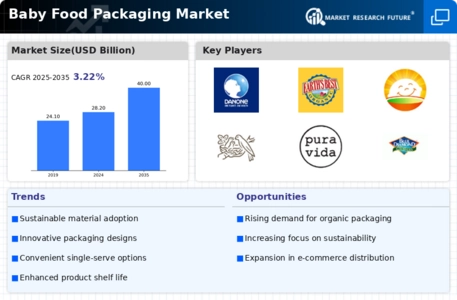


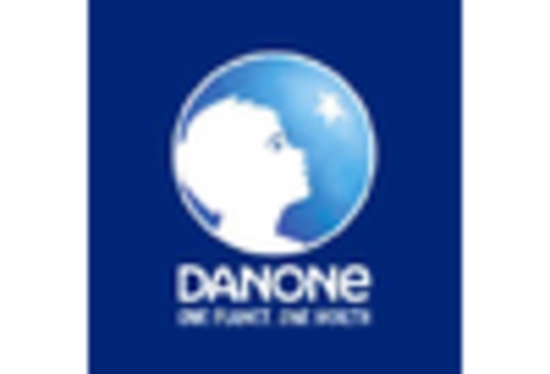
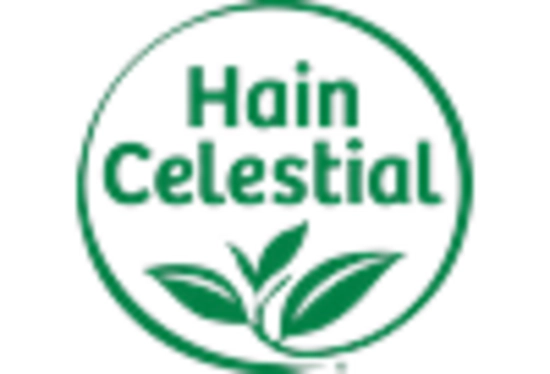
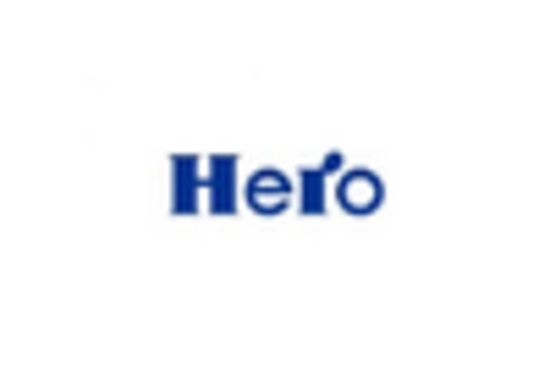
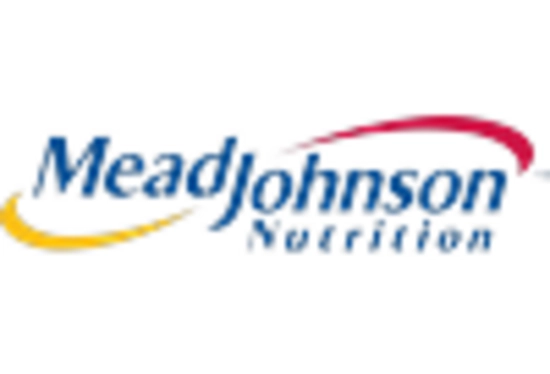


Leave a Comment